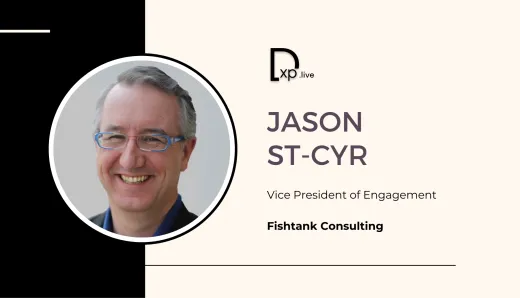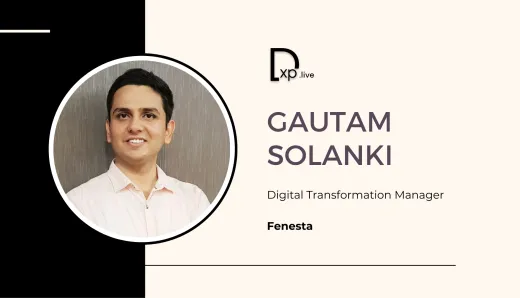AI, Culture, and the Future of Work: A Conversation with Srijeet Sarkar, Director HR at redBus

In this interview, Tarun Singh Rajput, Head of Marketing at Valuebound, speaks with Srijeet Sarkar, Director HR at redBus, part of the MakeMyTrip Group. Srijeet offers a detailed look into how redBus is using AI not just in engineering, but across the entire organization, right from onboarding and assessments to productivity tracking and non-tech functions. What follows is a deep-dive into a culture that’s chosen to build, not buy.
How has the AI boom over the past year or two changed the game for you at redBus?
Srijeet: It’s been transformative, but not in a threatening way. It helps us become more efficient and sharper at what we do.
We have been upfront with our people, in townhalls and other places, that AI is here to stay and here to make our offerings better, faster. We’re investing in training our people in AI, especially for engineers and product folks, so they can use AI tools to boost productivity. We’ve embedded this thinking into our culture. AI might be the maker, but humans remain the checkers who are contextualizing everything with real business understanding.
Can you share some of the actual systems you’ve built to make this shift real?
Srijeet: One major initiative is redLearn, our internal learning platform that’s part virtual world, part upskilling engine. It started with a simple question: how do we onboard faster and better post-COVID, now that tribal knowledge is gone?
So we built an entire metaverse-style city. New joiners, through Oculus or a mobile app, step into this virtual space where each building represents a team. They can walk in, explore, interact, and learn about the systems and people they’ll work with. This is day-one onboarding at redBus now.
That’s one of the most immersive onboarding systems I’ve heard of. What happens after that?
Srijeet: That’s where the other layer of redLearn kicks in. This layer is all about AI-powered, role-specific learning and assessments. Every team and level has a defined competency framework. Once someone joins, they take a self-assessment generated by AI based on that framework. The system red-flags gaps and automatically recommends personalized courses.
It’s self-paced, with no manager chasing you. But if you complete the assessments, improve, and even take on higher-level frameworks, you can go to your manager and say: “Here’s the data showing I’m ready for more.” It creates data-backed career conversations.
So you’ve effectively built an internal talent development engine. What else have you built?
Srijeet: I’ve had the good fortune of leading the development of several other internal tools as well, all built in-house with a fractional engineering bandwidth at my disposal. These aren’t vendor solutions, rather they’re tailored to our needs based on my observation of the organisation careabouts.
One is OMNIA, which dashboards engineering productivity by tying together Git and JIRA data. It gives us visibility into what’s being delivered, how efficiently, and whether the upskilling we do across the organisation is actually translating into better products with fewer bugs.
Then there’s OneLens, which integrates with redLearn, DarwinBox, PeopleBox, Omnia and other systems. It shows managers how a team member is doing across learning, engagement, productivity, and even promotion-readiness. All of it backed by real data. This tool will be going live this quarter.
We also very recently built out a meeting room management system called redMeet, that was vibecoded and taken live within 2 days of the requirement being received; for internal usage. This tool gives a QR code based solution to view and block meeting rooms on the fly.
Usually, companies buy tools like that. Why build them internally?
Srijeet: Predominantly because we can afford to do so from a capability and scale point of view, and in addition to that there’s definitely the fact that it works better for us from a context and personalisation standpoint. We also run company-wide hackathons where anyone, regardless of department, can pitch an idea. If it’s strong, you get engineering support to build it. Thus it’s engrained in our DNA from a product based culture standpoint as well.
This approach also means that we’re not paying enormous amounts to onboard external solutions for everything but rather having a healthy mix of building tools that are custom-fit, cost-effective, and constantly evolving with the organisational change; along with a few market best fits brought into the picture wherever necessary.
What allowed this kind of culture to thrive?
Srijeet: Two things. One, leadership across the org; be it in HR or other departments. Our senior leaders don’t just approve tech; they learn it first and lead from the front. That’s what created a top-down push to embed this in our culture.
The second is bottom-up energy. Take our campus hires, for instance. This year we brought in close to 50 freshers. Before joining teams, they went through GenAI bootcamps (with internal and external trainers). So by the time they start working, they already think AI-first, and often influence their seniors. That top-down + bottoms-up model made the culture shift real. There is constant exchange of knowledge facilitated across the board with this, making the change more amicable.
How have you enabled non-tech teams to adopt the same mindset?
Srijeet: Our CEO formed a cross-functional AI core team to drive a project called LEO (AI-fying redBus), with the team composition of senior people from engineering, program management, and one person from each sub function within the org. Their role was to study every team, break down workflows, and identify which tasks can be automated with AI.
In marketing, for example, we looked at how AI could improve user research, feedback analysis, and content creation. Some of our recent successful ad campaigns have been completely AI generated. In CRM, we built real-time translation bots that allow agents to interact with customers in any language. Along with this we also introduced AI agents to streamline refund and customer support responsiveness in CRM.
So it’s not just about technology. We’ve embedded AI across HR, finance, marketing, and support functions too.
You’ve also touched on assessments for external hiring. What’s happening there?
Srijeet: Good question. With AI tools now widely accessible, especially to aspiring fresher candidates, we had to rethink how we run coding assessments during campus hiring programs. So we built a proctoring system into redLearn.
It tracks eyeball movement, captures periodic images with background matching algorithms along with keystrokes count, as well as any sort of background activity in the video captured is also flagged for potential unethical practices. In its thorough assessment, it additionally flags AI-generated code vs. handwritten code too. We wanted fair, skill-based evaluations, and this system helps us maintain that standard even in an ever-evolving GenAI world.
Last one. If you had to send one message to companies still outsourcing or avoiding in-house tech, what would it be?
Srijeet: Build your own stack/hack.
You already have the people and the problems. Don’t always pay someone else to solve them for you with limited context. Start small, focus on real needs, and build from within. Back your people, give them room to experiment, do a pilot, and measure everything. The measure will give you a clear indication as to whether the effort of making a tool is worth taking up internally or needs to be sourced from outside!
That’s how redBus became AI-native before it was even cool! And that’s how any company can become future-ready; on its own terms.




